Alumni Discussions


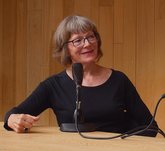
Vom Michigansee an die Ilm | 1993 gehörte Liz Bachhuber zu den erstberufenen Professorinnen an der neugegründeten Fakultät Gestaltung der damaligen Hochschule für Architektur und Bauwesen (HAB). Über 25 Jahre – bis zu ihrer Emeritierung im Jahr 2018 – hat sie die Geschicke der Fakultät und der Universität entscheidend mitgeprägt. Im Gespräch mit dem Direktor der Universitätsbibliothek, Dr. Frank Simon-Ritz, gibt sie Auskunft über ihren künstlerischen Werdegang und ihre Erfahrungen an der späteren Bauhaus-Universität Weimar. >> Weiterlesen...
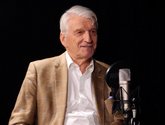
Als Prof. Hans-Ulrich Mönnig am 7. Juli 1989 sein Amt als Rektor der Hochschule für Architektur und Bauwesen (HAB) in Weimar antrat, schien die DDR noch fest im Sattel zu sitzen. Der Staatsratsvorsitzende hieß Erich Honecker und man bereitete das 40-jährige Jubiläum der Staatsgründung vor. Nur vier Monate nach seinem Amtsantritt kam es zum »Mauerfall«, der gleichsam den Anfang vom Ende der DDR bedeutete. Als Mönnig zum 30. Juni 1992 aus dem Amt als Rektor ausschied, war die frühere DDR der Bundesrepublik Deutschland beigetreten und der gemeinsame Bundeskanzler hieß Helmut Kohl. Dieser Systemwechsel ist eines der Themen, die im Alumni-Gespräch, das Mönnig am 8. Februar 2024 mit dem Direktor der Universitätsbibliothek der heutigen Bauhaus-Universität Weimar, Dr. Frank Simon-Ritz geführt hat, zur Sprache kommen. >> Weiterlesen...
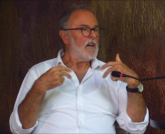
Vor den Wandteppichen von Christiane Schill im Senatssitzungssaal in der 1982 fertiggestellten und gerade frisch sanierten »Mensa am Park« haben sich Dr. Heiko Schultz, der von 1990 bis 2014 – also fast ein Vierteljahrhundert lang – Kanzler zunächst der Hochschule für Architektur und Bauwesen (HAB) und dann ab 1996 der Bauhaus-Universität Weimar war, und Dr. Frank Simon-Ritz, der seit 1999 Direktor der Universitätsbibliothek ist, zum nächsten Alumni-Gespräch verabredet. In dem Gespräch geht es zunächst um die Rolle von Schultz beim Bau der Mensa in den Jahren 1979 bis 1982. Als Leiter des Bereichs »Hochschulbauten« war er für die gesamte Bauausführung zuständig. Anschaulich erzählt er u.a., mit welchen Schwierigkeiten ein solches Bauvorhaben unter den Bedingungen der DDR zu kämpfen hatte. >> Weiterlesen...

In einem Alumni-Gespräch mit Dr. Jörg Brauns, dem heutigen Direktor der Berlin-Brandenburgischen Akademie der Wissenschaften in Berlin und früheren Studenten der Hochschule für Architektur und Bauwesen (HAB) in Weimar, geht es darum, wie sich das Klima an der HAB in den späten 80er Jahren veränderte, wie sich der allgemeine gesellschaftliche Aufbruch ab 1989 in der Hochschule niederschlug und wie die Hochschule in den Folgejahren umgestaltet wurde. Im Gespräch mit Bibliotheksdirektor Dr. Frank Simon-Ritz wird deutlich, dass Brauns zu den Akteuren der Wendezeit gehörte, die entschieden für Veränderungen eintraten. >> Weiterlesen...

In einem zweiteiligen Gespräch zur Hochschulgeschichte ist Prof. Gerd Zimmermann zu Gast, der nach 1992 als Rektor in drei Amtszeiten bis 2010 die Geschicke der Hochschule maßgeblich geprägt hat. Prof. Zimmermann spricht über sein Architekturstudium an der Hochschule für Architektur und Bauwesen in der zweiten Hälfte der 60er Jahre und seine Forschungs- und Lehrtätigkeit in den 70er und 80er Jahren. Ein Schwerpunkt des Gesprächs liegt auf den Jahren von 1989 bis 1992, der Phase der Wende und der sich daraus ergebenden Umgestaltung aller Lebens- und Arbeitsverhältnisse in der ehemaligen DDR. Auch hier spricht Prof. Zimmermann sowohl als Zeitgenosse und Augenzeuge als auch als Mitgestalter. Im zweiten Gespräch geht es um die Weichenstellungen für die weitere Entwicklung der Hochschule ab 1989. Dies führte 1993 zur Neugründung der Fakultät Gestaltung und 1996 zur Neugründung der Fakultät Medien. Im gleichen Jahr wählte die Hochschule ihren neuen Namen „Bauhaus-Universität Weimar“. Prof. Zimmermann will diesen Namen als Programm und als Signet der Kreativität und Internationalität verstanden wissen. >> Weiterlesen...
Mirko Muhshoff und Jano Kaltenbach experimentierten lange vor ihrem Studium der Medienkunst/Mediengestaltung im Medienbereich und entdeckten darin ihre Leidenschaft für »Irgendwas mit Medien«. Dies führte unweigerlich nach Weimar an die Bauhaus-Universität. Insbesondere das hier etablierte Projektstudium und das freie Arbeiten haben überzeugt. Es verbindet die begeisterten Filmemacher, Drehbuchautoren, Schauspieler und Regisseure jedoch viel mehr mit Weimar. Davon erzählen sie uns auf einer Tour durch Weimar mit Anika Mätzke, die zusammen mit ihnen studierte und viele gemeinsame Projekte mit ihnen realisierte. Ein gewachsenes Team, welches über die Studienzeit mit weiteren Kommiliton*innen die junge Medienproduktion Pixelpakete GbR gründete. Nun sind sie freie Filmemacher. Mirko Muhshoff und Jano Kaltenbach haben sich einen lang gehegten Traum, den Dreh einer eigenen Mockumentary-Serie, erfüllt. Die achtteilige Serie »Irgendwas mit Medien« feierte am 13. April Premiere und startete am 14. April in der ARD-Mediathek, produziert von der UFA Serial Drama im Auftrag des MDR und in Zusammenarbeit mit ARD Kultur. >> Weiterlesen...
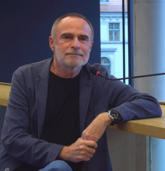
In der neuen Ausgabe der Alumni-Gespräche berichtet der langjährige Kustos der Bauhaus-Sammlung der Klassik Stiftung Weimar, Michael Siebenbrodt, u. a. über sein Studium an der Hochschule für Architektur und Bauwesen Weimar. Nach seinem Diplom wurde er beauftragt, die Bauhaus-Stätten in Dessau einer neuen Nutzung zuzuführen. Allerdings veranlassten ihn die zeitgeschichtlichen Konstellationen, seinen Vertrag am Bauhaus Dessau 1988 zu kündigen. Im Gespräch mit dem Direktor der Universitätsbibliothek, Dr. Frank Simon-Ritz, geht es auch um das Musterhaus Am Horn, seine Nutzung in der DDR, die Geschichte seiner Sanierung und um das Jubiläumsjahr 2023. >> Weiterlesen...
In the Alumni Special series, we interviewed alumni about their situation during the Corona pandemic. They talk about their personal experiences and reflect on the opportunities and possibilities they see for themselves and society in this extraordinary situation. With Cornelia Erdmann – freelance artist in Hong Kong; Alexander Döpel – company founder in Jena; Cornelia Klube – civil engineer in New York; Grit Höhn – freelance artist in Jena; Katja Ganesh – graphic designer in Bangalore; Markus Dietrich – director and screenwriter in Weimar; and more to follow.
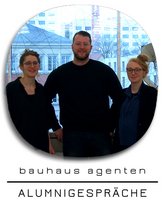
All three studied at the Faculty of Design and are now working in museum development at the Klassikstiftung Weimar. Maxie Götze, Valerie Stephani and Johannes Siebler are the Bauhaus Agents ensuring that no one gets bored while visiting the Bauhaus Museum or the Neues Museum. Whether in productive workshops with young people or as »blind-spot hunters« in the exhibitions, the three designers want the museum to be a place for everybody! In their talk, they discuss the challenges and successes of their work, declare their loyalty to the university cafeteria and share a little message for all students.
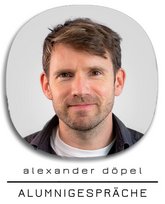
In 2014, the two Visual Communication students Alexander Döpel and Robert Hellmundt hear for the first time that the incorrect use of disinfectants in everyday medical practice in Germany leads to an average of 900,000 hospital infections per year – of which 30,000 are fatal. The connection between the functionality of common disinfectants and this phenomenon is immediately clear to them: the colourlessness of the substance makes it difficult for the user to monitor its residual presence. It seems they literally have the solution on hand: disinfection must become visible.
Read more...

There are many names for Olivia Vieweg’s work: comic, graphic novel, Germanga to name a few. And yet, they actually all mean the same thing – telling stories with hand-drawn pictures. Her final project in the »Visual Communication« degree programme tells the story of two young women caught in a zombie apocalypse between Weimar and Jena. The comic became a screenplay, and the screenplay a film, which premiered at the Toronto International Film Festival and has been showing in cinemas since 2019. The idea for »Endzeit« came to Olivia while on a train ride between Weimar and Jena. We decide to return to this creative space for a conversation, to explore the success story of her comics, discuss Japanese influences and find out what really matters when it comes to drawing. The film adaptation of the same name has been showing in German cinemas since 22 August 2019.

Prof. Dr.-Ing. habil. Christian Schädlich studied Architecture at the »State Academy of Architecture and Fine Arts« – later renamed »Architecture Academy« – from 1947 to 1952, became the second student to obtain a doctorate and was a lecturer until 1987. In conversation with University Library Director Dr. Frank Simon-Ritz, he reminisces on the lively years of his studies; student parties, the »Henselmann Circus«, momentous upheavals, and »the Master’s thesis that was actually built« and is still in use today. An exciting deep-dive into the history of the Bauhaus-Universität Weimar.

In the 1960s he studied Architecture at the University of Architecture and Civil Engineering in Weimar, from 1993 he held an Aesthetics Professorship at the Bauhaus-Universität Weimar; today, Professor Olaf Weber is emeritus. The slogan »I can’t see any more Bauhaus« is to be understood literally; Prof. Weber has been blind for several years. The discussion covers the topics of the new Bauhaus Museum, GDR architecture, the 42nd Congress of the Absurd, the second 42nd Congress of the Absurd, perceiving and appreciating architecture without being able to see, Prof. Weber’s current commitment to pacifism and the third 42nd Congress of the Absurd.

»When my godmother found out that I wanted to become an architect, she reached into her bookcase and gave me the book »Vers une architecture« by Le Corbusier«. Later, Le Corbusier himself stood at the drafting table of Klaus Uhlig – a student at the time – and critically examined his design for the ideal city. Encounters with Walter Gropius, Le Corbusier, Peter Keler and Mies van der Rohe profoundly influenced the eventful life of architect and visual artist Dr. Klaus Uhlig. This alumnus began his architectural studies in Weimar in 1953. In an interview with University Library Director Dr. Frank Simon-Ritz, Dr. Uhlig gives a first-hand account of the difficult study conditions in the GDR, parties in times of food stamps, his design for the ideal pedestrian city and more.

From Architecture to Business Administration, from Germany to Belgium and Great Britain via Sweden, from the Bauhaus-Universität Weimar to Daimler Real Estate. There, Achim Jedelsky manages the IT and process division; today he returns to Weimar after a long time to tell future alumni about career entry opportunities and his personal career path. In our interview, he talks about Ultimate Frisbee, the permeating smell of coal from times past, the upcoming »Innovator’s Dilemma« and his experiences with the university’s mentoring programme.
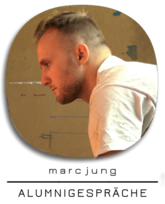
From professional wrestler in the second national league to Fine Arts alumnus: Marc Jung’s career path has been anything but linear. Over the course of his life, Erfurt-born Jung has moved to Jakarta, New York and Vienna; meanwhile, his mixed-media paintings adorn a full 36-metre interior wall of Facebook’s open-plan office in Berlin. He gives Paul Klee’s classic »Baldgreis« a complete makeover for us and talks in an interview about screwed-up art classes, recipes for success against self-doubt and his difficult early days at the Bauhaus-Universität Weimar.
Users, cryptography, Spaghetti Westerns, gender identities and body constructions – Katharina Spiel can certainly put these terms into a coherent context from her study experiences. She studied Media Culture and Media Systems as well as Computer Science and Media at the Bauhaus-Universität Weimar from 2005 to 2014. She was simultaneously involved in the city council for 5 years as the second youngest member. Now she is completing her doctorate at TU Wien in Vienna, where she is always finding references to Weimar.

Throughout his life, Jamal Al-Talawe has lived in many different places. Born in the Gaza Strip, his path through life led him through Syria to the GDR and on to the Bauhaus-Universität Weimar, where he studied Civil Engineering from 1975 to 1979. Today he works as a civil engineer at the University Hospital Mannheim. He has written a book about the phases of his life, which he presented at the summaery 2016 alumni reunion. We asked him a few questions afterwards.
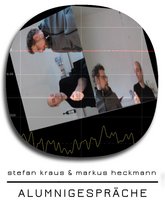
Media artists Stefan Kraus and Markus Heckmann met in Weimar and now design projects all over the world. Stefan Kraus studied Architecture at the Bauhaus-Universität Weimar and is Creative Director of the live event media production MXZEHN. Markus Heckmann was initially enrolled at the University of Ilmenau. Through Stefan Kraus, he got to know the Bauhaus-Universität Weimar and transferred here. Today Markus Heckmann lives in Toronto, where he works as Technical Director for the company Derivative.

2016 is an anniversary: HP has been living in Weimar for twenty years! HP Grossmann started his studies in 1996, the year the Bauhaus-Universität Weimar got its current name. He was initially enrolled in the Faculty of Civil Engineering but soon switched to the Faculty of Design, which was in the process of being established. He set up his own studio in the former Weimar city gasworks and from this location has since been making his mark on Weimar’s cultural and art scene.
![[Translate to English:] Caspar Clemens Mierau](/fileadmin/_processed_/c/5/csm_ccm_cd910c8141.jpg)
Born in Berlin, Caspar Clemens Mierau escaped the capital to consciously concentrate on his degree in Media Studies in Weimar until 2008. Today he is living in Berlin again. In addition to his job as Head of Development at Moviepilot.com, he writes articles for online magazines and, under the name »Leitmedium«, creates a buzz on the internet with blogs and podcasts. He has devised his personal dream seminar plan for us. In the talk, he shares anecdotes about how Media Studies has shaped him.
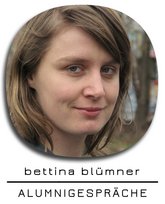
Director and screenwriter Bettina Blümner, winner of the German Film Award in 2008, took Media Studies and Design at the Bauhaus-Universität Weimar from 1998 to 1999. She made two short films during this time, and experiences gleaned from her broad range of studies led her to pursue the field of »film«. Bettina Blümner discusses the projects, places and people she has grown very fond of in Weimar. She provides an insight into her current work and has some direct advice for budding filmmakers.
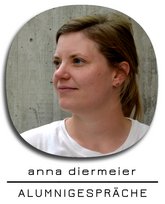
Recycled carbon fibre as a link between working in the automotive industry and studying at the Bauhaus-Universität Weimar? Anna Diermeier, who completed her degree in Product Design here in 2007 and now works as a Designer in the Colour&Trim team at the MINI BMW Group, reveals to us how this connection comes about. She also talks about her memories of studying in Weimar and how it prepared her for the work she does now.
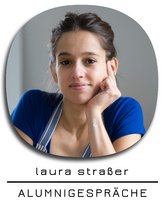
After her studies at the Bauhaus-Universität Weimar, ceramics and porcelain designer Laura Straßer has worked for numerous international clients. In addition to working for Kahla in Thuringia, the Frankfurt-born designer also develops products for her own labels »Ilmgold« and »frenchknicker«. For alumni discussion № 10, we were invited by Laura to her studio in Berlin. Over a cup of coffee, the product designer chatted about her studies, the changes brought about by the Bachelor and life between Berlin and Weimar...
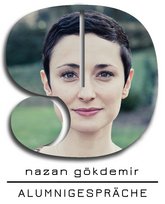
Arte and ZDF presenter Nazan Gökdemir completed her studies at the Bauhaus-Universität Weimar. In a reverse interview, she revealed to us the differences regarding studying at a French university and what you don’t get taught at the Bauhaus...
Read more...

Whether as a former student, artist, staff member, lecturer or Ph.D. graduate, Ms. Salmon has accompanied the Bauhaus for over a decade. We discuss what the cosmopolitan still misses at the university, what her relationship to Weimar is like and what the difference between »Fine Arts« and »Media Art« actually is...
Read more...

The Bauhaus Summer School is an excellent opportunity to meet people from all over the world, establish international networks, acquire skills professional and otherwise and, last but not least, to get to know the city of Weimar and the Bauhaus-Universität Weimar. Over 400 prospective students, current students, graduates and alumni apply for this popular educational event every year. What motivates participants and connects them with Weimar and the Bauhaus-Universität...

Student initiatives at the Bauhaus-Universität Weimar are numerous and diverse. Manuela Klaut became familiar with and helped to shape many of them during her time as a student in Weimar. In this alumni discussion, she provides insight into the creative voluntary work of students with a slew of anecdotes.

Norbert Möller studied in Weimar in the eighties, when the Bauhaus-Universität Weimar was still called the »University of Architecture and Civil Engineering«. In this alumni discussion, he talks about the small but subtle differences of university life back then compared to now – but also about things that are hardly different at all for today’s students.
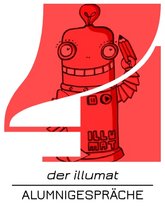
Once a project of students for the 2007 walking tour, it is now run by a group of alumni, students and guests: The Illumat travels the city and its surroundings, delighting its guests with spontaneous illustrations on request. In this alumni discussion, the Illumat talks – or rather, draws – about its early days in Weimar.

From professional footballer to Bauhaus student and finally to Designer and Diversity Consultant – in this alumni discussion Marcus Urban outlines his career and offers some reassuring words for all students: everyone experiences a lack of direction before, during and after their studies, but eventually everyone finds their way.
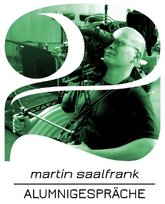
After completing his Master’s in Media Design, Martin Saalfrank is now taking on a position as lecturer at his old university. In this alumni discussion, he tells us the ways in which the university has developed in recent years and where students at the Bauhaus-Universität Weimar end up after their studies.
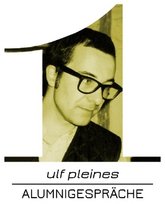
Ulf Pleines studied Architecture and Media Architecture at the Bauhaus-Universität Weimar. In this photo interview, he reminisces with us about his time as a student. Or he hides behind his camouflage.
Changes from color to monochrome mode
contrast active
contrast not active
Changes the background color from white to black
Darkmode active
Darkmode not active
Elements in focus are visually enhanced by an black underlay, while the font is whitened
Feedback active
Feedback not active
Halts animations on the page
Animations active
Animations not active